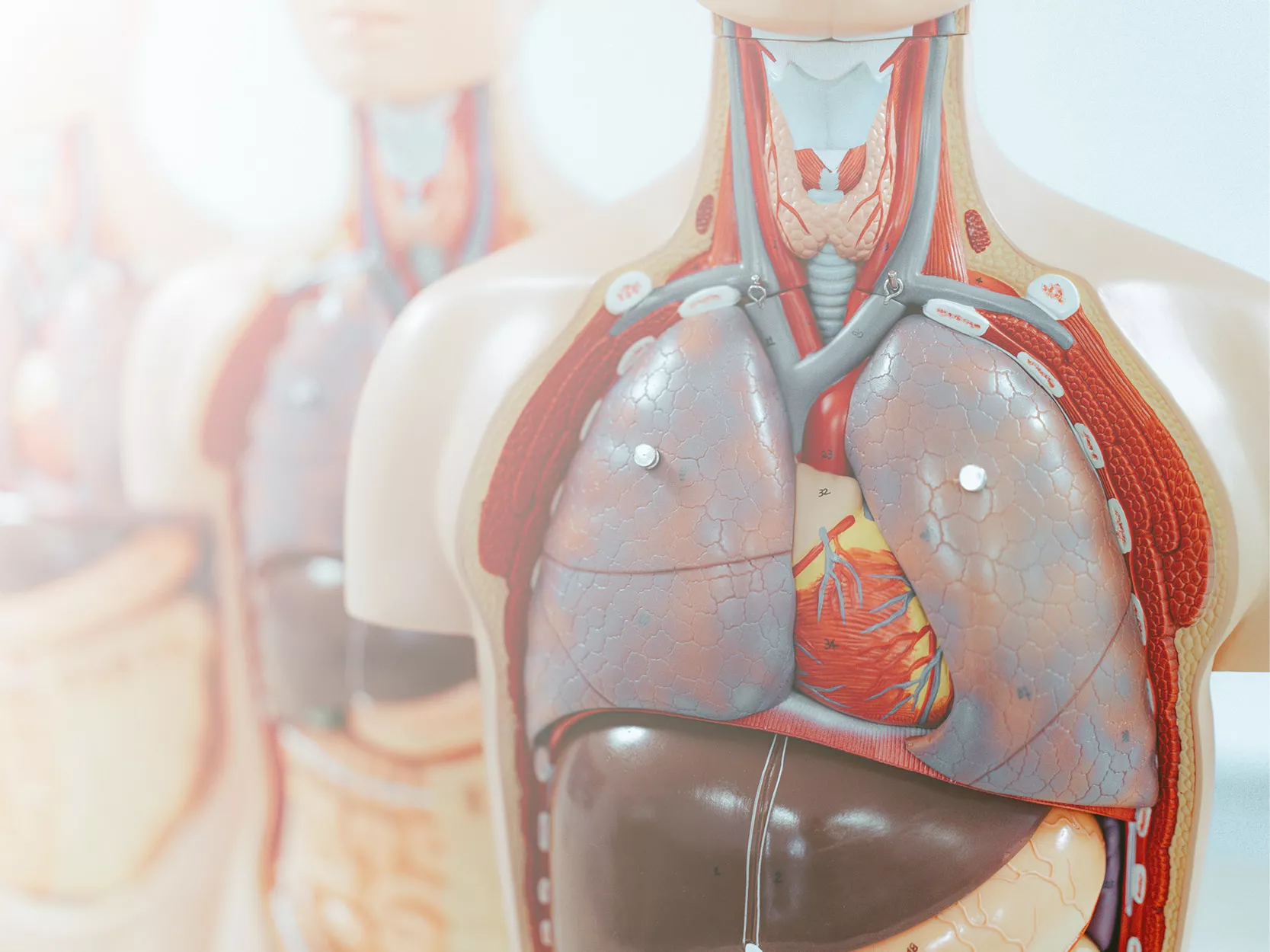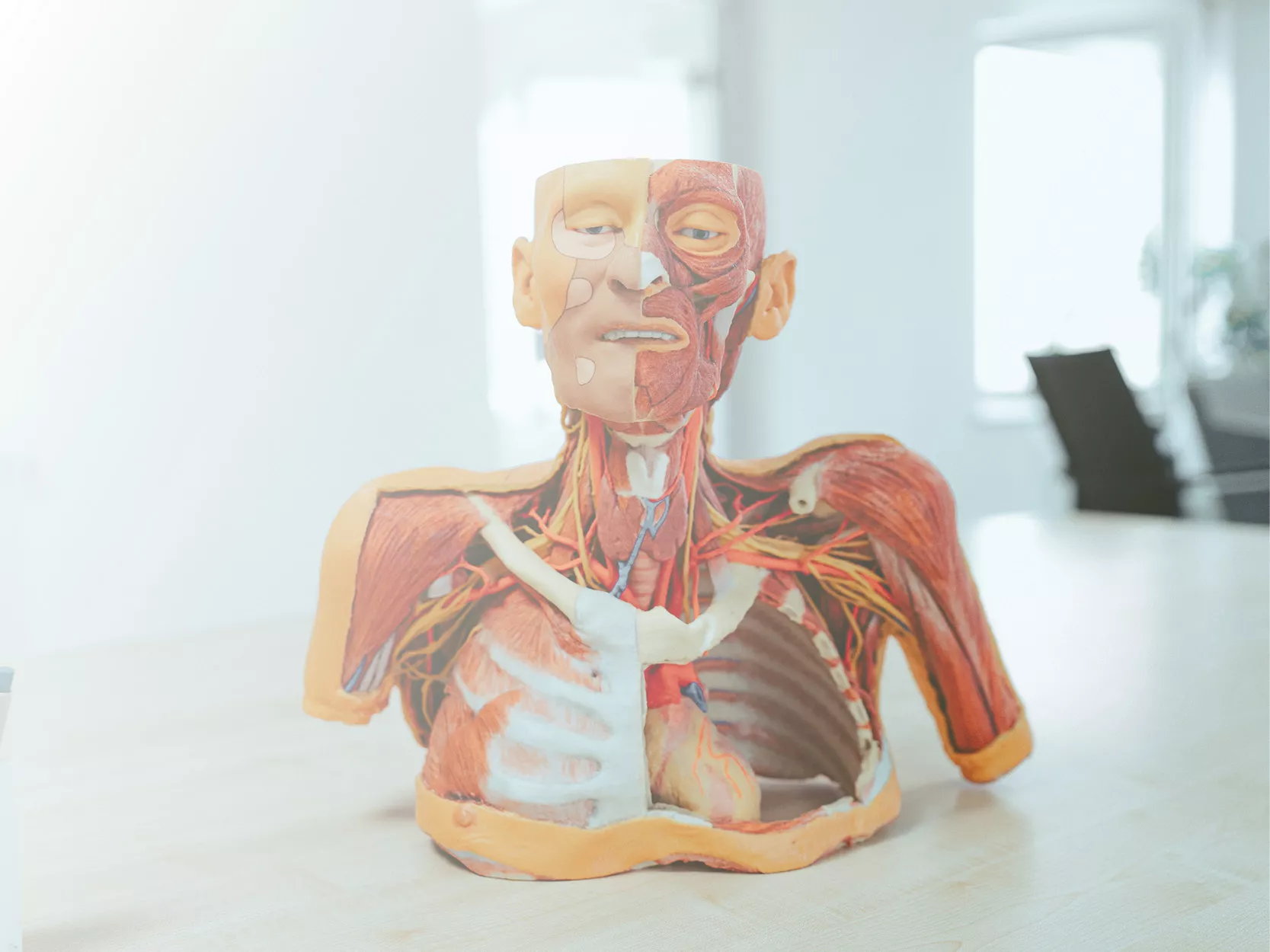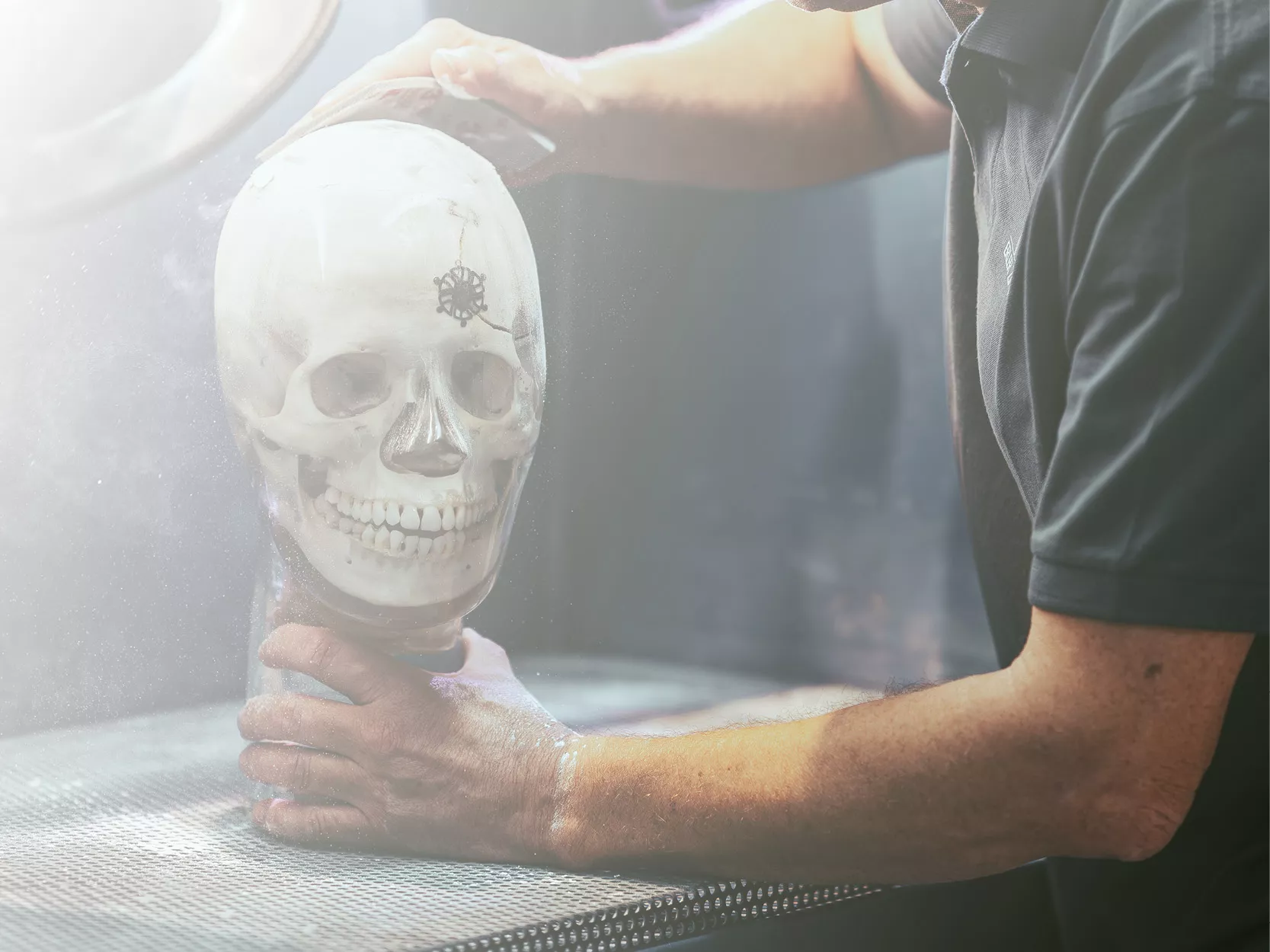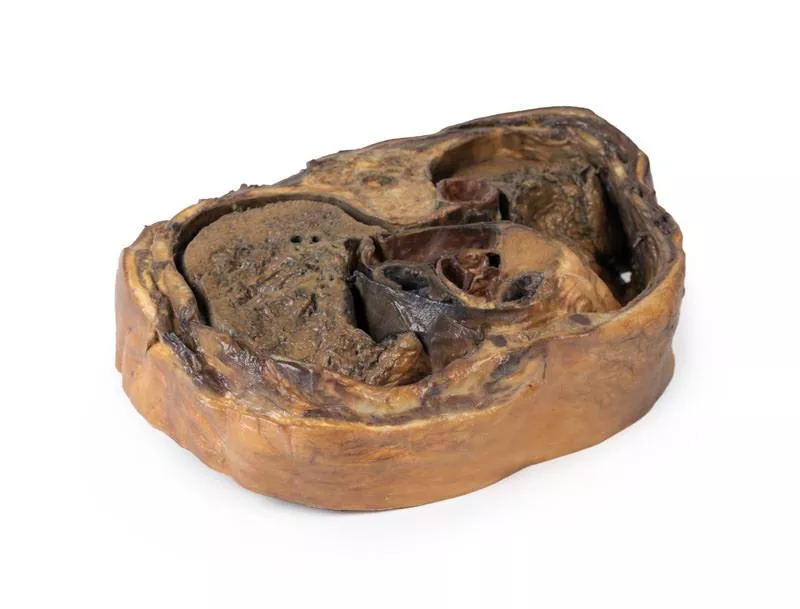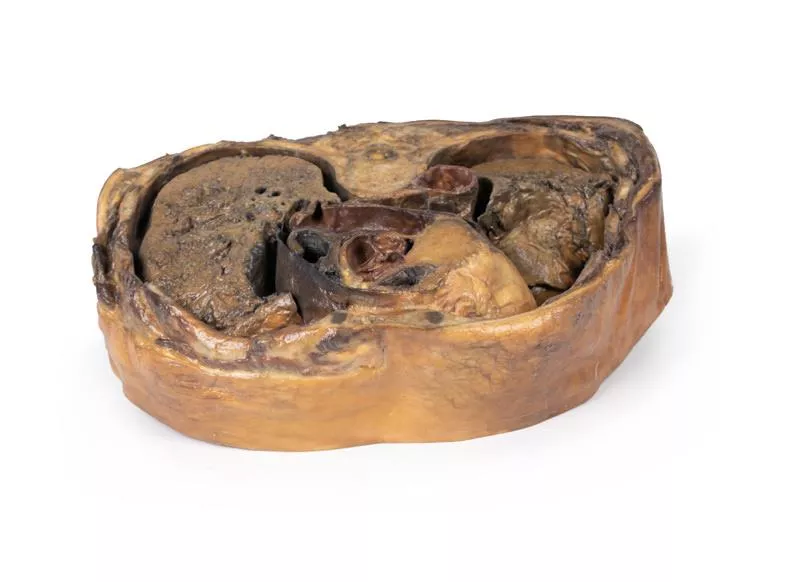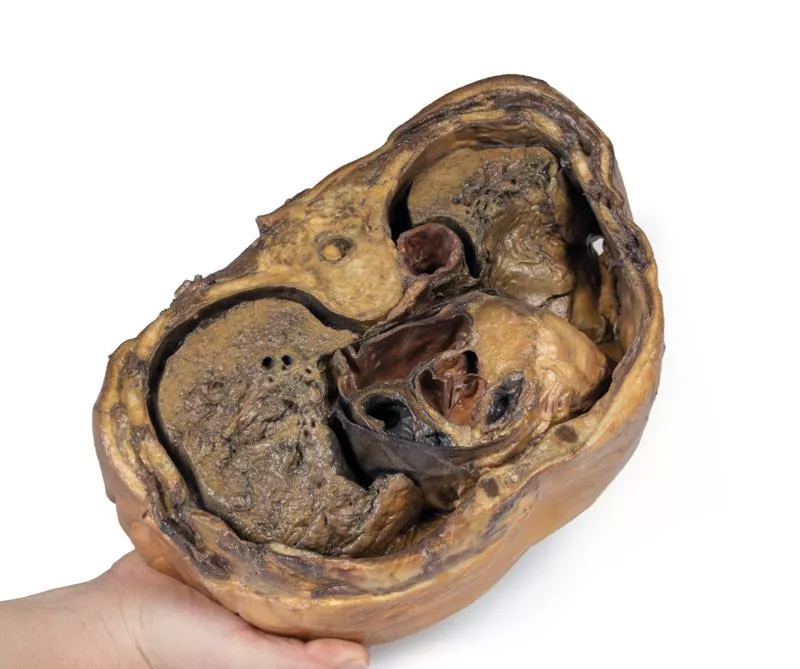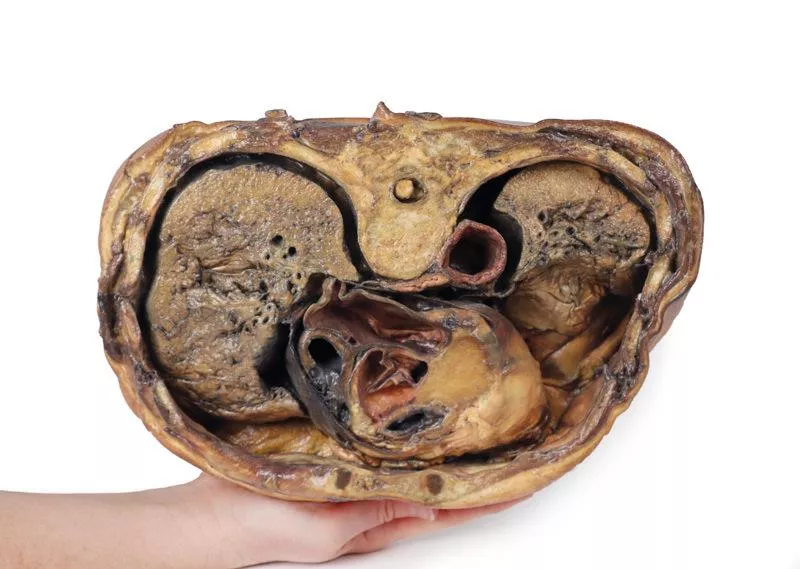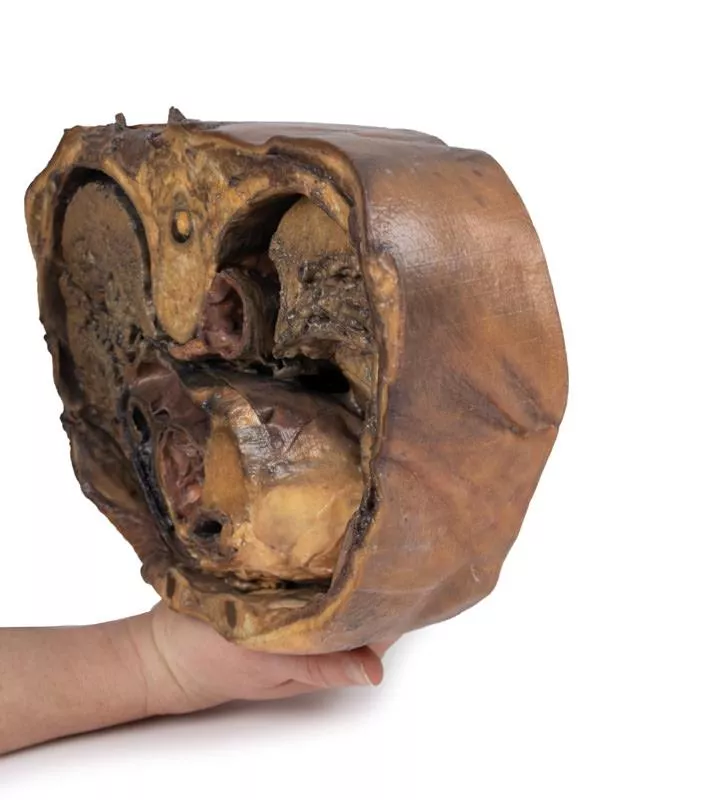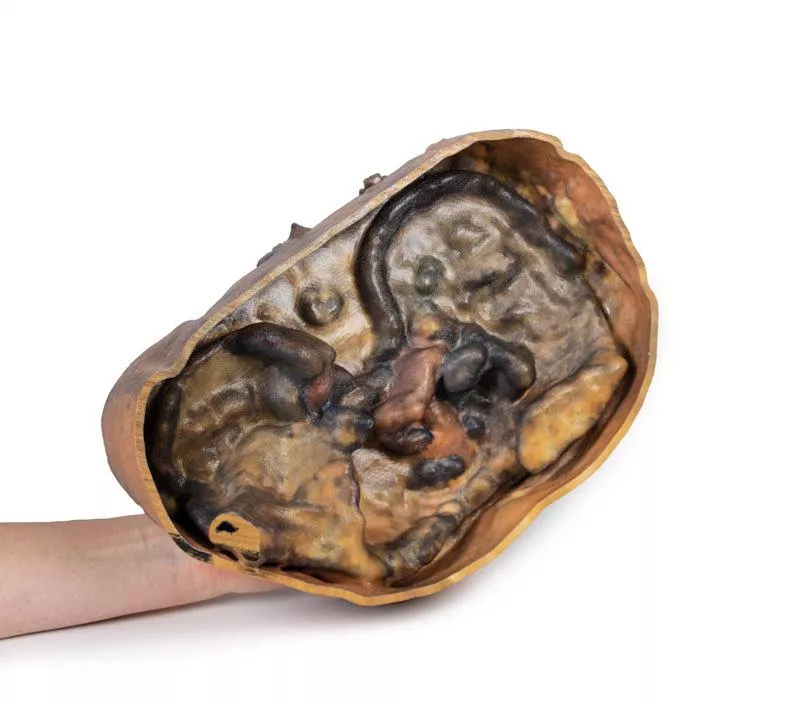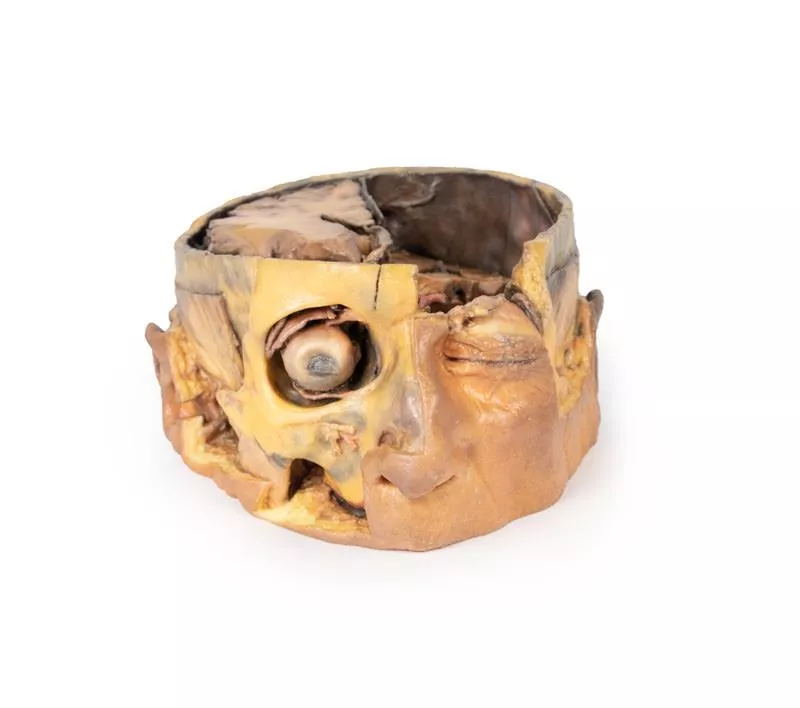Product information "Thoracic cross section at T6"
This detailed 3D model presents a transverse cross-section of the thorax at the level of the T6 vertebra, offering a clear view of thoracic anatomy in relation to skeletal, vascular, respiratory, and cardiac structures.
Key Features:
Posterior Structures
- Begins medially with the spinal cord within the vertebral canal
- Costovertebral joints of the 6th ribs are visible, along with surrounding ribs forming the thoracic wall
Anterior Thoracic Wall
- Costosternal joints show the connection between ribs and sternum
Major Thoracic Organs
- Oesophagus located anterior to the vertebral body
- Descending aorta situated lateral to the vertebral body
Lungs and Pleural Cavities
- Within the pleural spaces (lined by parietal pleura):
Heart and Mediastinum
- In the middle mediastinum, the heart is shown within the pericardium, sectioned to display internal anatomy:
Key Features:
Posterior Structures
- Begins medially with the spinal cord within the vertebral canal
- Costovertebral joints of the 6th ribs are visible, along with surrounding ribs forming the thoracic wall
Anterior Thoracic Wall
- Costosternal joints show the connection between ribs and sternum
Major Thoracic Organs
- Oesophagus located anterior to the vertebral body
- Descending aorta situated lateral to the vertebral body
Lungs and Pleural Cavities
- Within the pleural spaces (lined by parietal pleura):
- Right lung: middle and inferior lobes
- Left lung: inferior lobe
- Left lung: inferior lobe
Heart and Mediastinum
- In the middle mediastinum, the heart is shown within the pericardium, sectioned to display internal anatomy:
- Left atrium (posterior)
- Aortic valve, right ventricle, and right atrium in clockwise order
- Aortic valve, right ventricle, and right atrium in clockwise order
Erler-Zimmer
Erler-Zimmer GmbH & Co.KG
Hauptstrasse 27
77886 Lauf
Germany
info@erler-zimmer.de
Achtung! Medizinisches Ausbildungsmaterial, kein Spielzeug. Nicht geeignet für Personen unter 14 Jahren.
Attention! Medical training material, not a toy. Not suitable for persons under 14 years of age.




